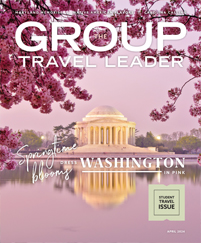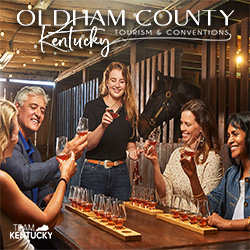Imagine drifting off to sleep in Vienna, then waking up in a quaint Austrian medieval town. This type of effortless travel happens frequently aboard a river cruise.
River cruises appeal to many travelers seeking authentic yet hassle-free experiences. Instead of feeling cooped up on a motorcoach or a crowded ocean cruise, river cruisers spend most of their time engaging theirs senses with the local area.
For the past five years or so, groups have increasingly pursued this laid-back style of travel. When you look at the numerous benefits and cleverly constructed itineraries, it is easy to understand why.
To decide whether river cruising would be a good fit for your group, consider how it differs from other modes of travel and the steps involved in making it happen.
Not a Motorcoach or an Ocean Liner
To cover ground on a motorcoach, itineraries often call for groups to pack their belongings every other night. The idea of spreading out your personal effects for the week while touring large swaths of a continent draws many to river cruising.
“River cruises give you the ease and convenience of unpacking at one place,” said Russ Rosenberry, co-founder of Islands in the Sun, a cruise-focused tour operator. “It’s a hybrid of a cruise and a land tour because the hotel travels with you.”
Many travelers have experienced some of those convenient aspects of cruising aboard large ocean-going vessels. But ocean and river cruising differ greatly. One of the biggest contrasts is between the all-inclusive nature of the river cruise and the ocean cruise’s add-on pricing policy.
“One nice thing about river cruises is that the travelers know what the trip is going to cost,” said Rosenberry. “Ocean cruises often add on charges for excursions, alcohol, gaming and other stuff, which can turn into a big deal.”
Ocean cruises also vary greatly in passenger counts. An average ocean cruise holds around 3,000 people; the maximum capacity for most river cruises runs about 150 to 200 people. Groups often enjoy the less-crowded and closer-knit feel of these smaller ships.
Many travelers have also noted that ocean cruises focus more on the ship and its extensive amenities, but river cruises keep the spotlight on the destination and maximizing passengers’ time in port.
Europe and Beyond
River cruising first took off in Europe, and that continent remains the most popular destination for this travel style. Many find the charming European scenery visible from the ship part of the appeal, since river routes lead past cities of historic navigational importance.
“It’s a great way for folks to see the interior of Europe,” said Rosenberry. “A river cruise takes you back to a time before there were highways, since people used to travel using these rivers. It is a Victorian way to travel.”
Cruises sailing along the Mosel, Rhine, Seine and Danube rivers currently sell out for most river cruise providers. Outside Europe, Myanmar, China and Vietnam have also attracted large numbers of passengers looking for something a little more adventurous.
“We have a lot of people booking on the Danube, Rhine and Seine rivers,” said Rosenberry. “Any river cruise in France also does really well.”
Passengers can immerse themselves in the history of the destination during a cruise, with onboard lectures, cooking demonstrations and regional-craft-making sessions. For example, a cruise through northern France might include a lecture on impressionists inspired by the Seine.
Groups can choose optional guided tours of most cities that offer headsets so they can walk at their own pace but still hear the escorts recounting the area’s history. Excursions have expanded to offer more adventurous outings, such as cycling tours.
Niche cruises that cater to special interests have also increased, such as departures focused mainly on local cuisine or classical music.
An American Renaissance
The dynamic growth in European river cruising has inspired some companies to foray into American waters as well. The American Queen Steamboat Company has resurrected North American river cruising with ships running up the Mississippi and Columbia rivers.
“The most popular domestic itinerary is round trip from New Orleans to Memphis and from St. Paul to St. Louis,” said Rosenberry. “The other is from Portland to Clarkston, Idaho, on the Columbia River.”
According to Rosenberry, domestic cruises have proved a popular first-time experience because of the ease of traveling within the United States.
“We’ve got a bank club taking a motorcoach from Nebraska to St. Paul, Minnesota, where the cruise starts,” said Rosenberry. “That way they were able to get 40 people to go. Motorcoaching to the destination helps groups with a lot of older folks that aren’t up to airline travel anymore.”
Planning a Cruise
Rosenberry recommends planning a river cruise around an event like the anniversary of D-Day on a Seine River cruise that visits the Normandy Beaches. Groups also enjoy spring river cruises to the Netherlands during the Tulip Festival.
Travel planners should consider leveraging the expertise of a tour operator to ensure a smoothly run first river cruise.
Cruise experts can also provide insight into each river-cruise brand and itinerary, since they have taken many of the cruises themselves.
There is one final benefit for group leaders using a river cruise: Once your group steps aboard the ship, you can relax. The river cruise staff can take it from there.










